Dlugoszewski in Berlin – MaerzMusik24 part 2
Performance: Music and dance
Previous part: Dlugoszewski in Berlin – MaerzMusik24 part I, Behind (or before) the scenes
Next: Dlugoszewski inBerlin – MaerzMusik24 – part III, Research and people
Dancer and choreographer Erick Hawkins and composer Lucia Dlugoszewski met in 1952, soon after the foundation of Hawkins own dance company. Hawkins danced before – first male dancer – in the company of Martha Graham.
Hawkins explains in his writings the importance of music – live music – in au pair connection with dance and its “free-flow” movement. I already read all this and was excited to experience it with my hands and eyes working with dancer and choreographer Katherine Duke, former assistant of Lucia Dlugoszewski and actual director of the Hawkins Dance Company in New York. In fact Dlugoszewski, composer in residence of the Dance Company, took over the direction and even choreographic duties after Hawkins’s death in 1994. But, as long-standing Hawkins company dancer and Hawkins archive curator Louis Kavouras pointed out during our stay in Berlin, she was choreographing all the time even before. This was an interesting statement especially in relation with all the materials I saw at the Library of Congress. Maybe Dlugoszewki’s mind set was “in tune” with movement as much as with sound…
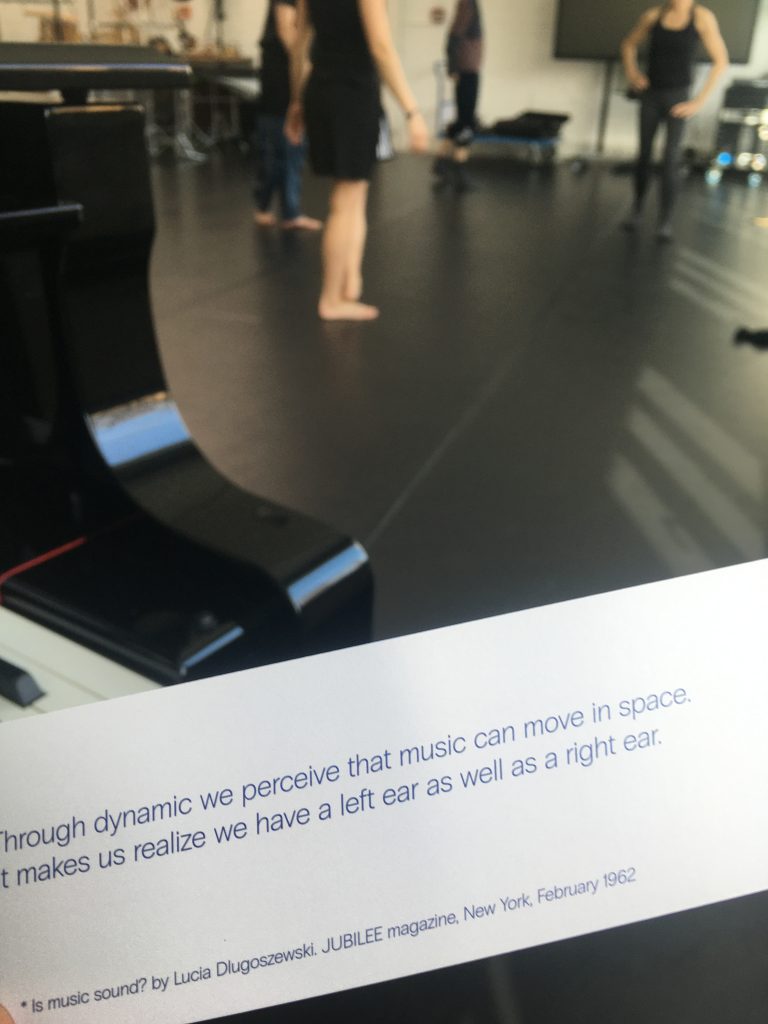
This hypothesis became stronger while rehearsing with the (amazing) dancers selected for the project, Juan Corres, Laia Vancells Pi, Marco Rizzi, Kristina Berger.
Kristina was also performing the solo dance “Fountain in the Middle of the Room” with the music of the first two movement of Exacerbated Subtlety Concert for timbre-piano by Dlugoszewski. Here is what Katherine Duke writes about it:
“A Fountain in the Middle of the Room” was for me an intense journey with Lucia who is both the choreographer and the composer of the piece. She had wanted to premiere the solo in 1999 along with her beautiful new dance “Radical Ardent”, a huge work with eleven dancers organised in duets. […] She resumed working on “Fountain” to premiere it in April of 2000 with her epic work “Motherwell Amor”. Unfortunately, we lost Lucia on opening night; she had passed away in her apartment still working on the upcoming performance. The company and musicians performed “Motherwell Amor” that evening; “A Fountain in the Middle of the Room” was not performed as she was the sole musician. Lucia and I had a performance date set for the following month to perform the solo. Needless to say, I was devastated, thrown into wrenching times but forced myself to work on arranging the solo which I premiered on 26 May 2000 in silence and dedicated it to her. As opportunities to perform the solo continued to arise, I searched Lucia’s music to find something that felt connected. Finally, two of the four parts of her “Exacerbated Subtlety Concert (Why does a Woman Love a Man?)” seemed a match. […] For this dance, Lucia and I discussed a revolution of subtlety, the high risk of elegance and a torn non-linear wild elegance of space throughout the delicacy of construction. Lucia daringly embodied that delicate mystical ‘something’ of seeing and hearing for the first time which the haiku poets practice without respite.”
Rehearsing Fountain in the Middle of the Room, Kristina Berger dancer, choreography and music by Lucia Dlugoszewski, Exacerbated Subtlety Concert I and II. Pics by Louis Kavouras
Cantilever (1963) has a different energy, sunny, joyful and sparkling. Dlugoszewski sets the music so that she could keep constant eye-contact with the dancers, and literally follow them “step by step”. Louis Kavouras confirmed this, also telling us that she often corrected dancers in the studio, as she knew the choreography better than them! The rehearsals confirmed my first impression transcribing the piece (see Part I): there is an intimate connection between sound and movement, big or minimal, and a love for small precious details that Dlugoszewski and Hawkins clearly shared. It’s not something flashy, dramatic or showy; the adjectives that come to my mind now that I try to describe it are “simple, beautiful, elegant, subtle”… some of the favourite words used by Dlugoszewski. Looking at the dancers literally embodying these concepts, under the guide of Katherine, left me a huge impression.
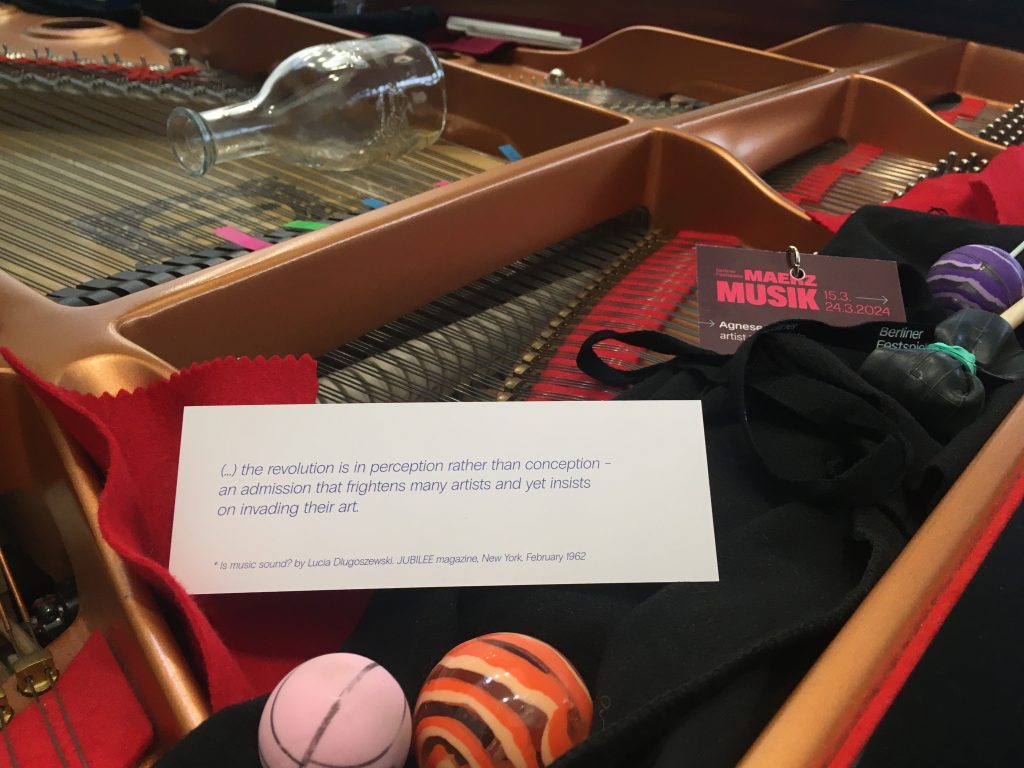
As for the rest of the program, including four piano solo pieces, that’s what I wrote in the booklet:
“[…] Henry Cowell and Alan Hovhaness both received commissions by Erick Hawkins Dance Company, although not for piano solo works. They were both connected to an important figure in Dlugoszewski’s formative early years in New York – though quite cumbersome in the later years: John Cage. Cowell pioneered the exploration of new sound production both on the keyboard and on the inside of the piano, and transmitted his explorative attitude to Cage, one of his students. I can’t think about prepared piano, or even timbre piano, without considering the mysterious sounds and never-before-seen gestures of Cowell’s “The Banshee” (1925). And the outrageous (for the time) clusters of “The Tides of Manaunaun” (1912) opened the field to among other things some of Dlugoszewski’s favourite techniques in “Cantilever”.
“Spring Music with Wind” (1973) by Eleanor Hovda is a solo piano piece for extended techniques. Subtle and delicate, connected strongly with breath, gesture and voice, it goes in search of new sounds with lightness. Quoting conductor Jeannine Wagar, “The title, ‘Spring Music with Wind’, suggests the flow of energy and its non-quantifiable shape”, a concept that Hovda often underlines and closely links to the timbre of sound. In this piece she prescribes the use of friction mallets and a curved glass bottle.”
Alan Hovhaness’s “Shalimar op. 177” (1950, rev. 1951) belongs to his “Armenian period”. As the son of an Armenian immigrant, he became increas- ingly attracted to Armenian and Eastern music after an academic training. In his own words, “Shalimar” was composed in Kashmir “after visiting the Mogul gardens and many beautiful mountains in the Himalayan regions. The foun- tains no longer gush forth their music and beauty in the Shalimar gardens, but the memory of their sound and visual wonder among the great Chenar trees, with steep, rugged mountains rising in the background, was in my imagination and I summed up the lost scenes during the days of Mogul grandeur. The form of the Suite, with its interludes for borders, suggests that carpet-like design of Mogul gardens.”
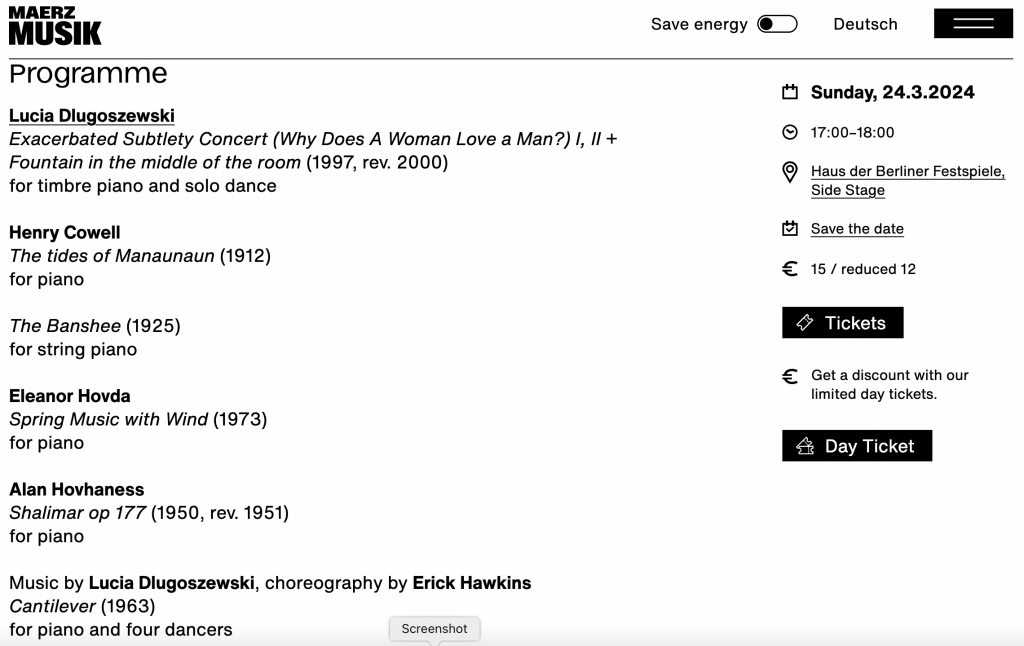
Below some pics of the show on Sunday 24th March (full house at the BerlinerFestspiele Side Stage!) © Berliner Festspiele, Foto: Camille Blake.
You can download here the very interesting booklet dedicated to the composer by MaerzMusik.

Friends in the audience 
Looking at Kristina 
Here she is 

Cowell 
Hovda 
Hovhaness 
Cantilever: Marco, Juan, Laia 
Cantilever: Marco and Juan 
Cantilever: Kristina, Juan, Laia 
All of us with Katherine Duke
Previous: Dlugoszewski in Berlin – MaerzMusik24 part I, Behind (or before) the scenes
Next: Dlugoszewski in Berlin – MaerzMusik24 – part III, Research and people


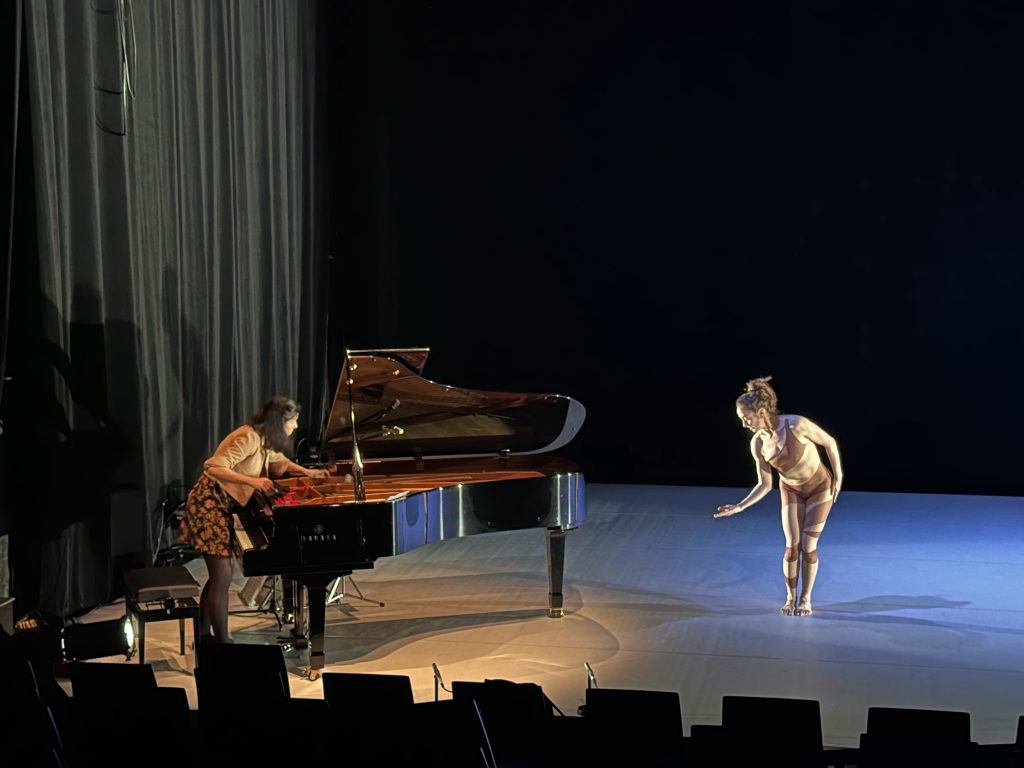
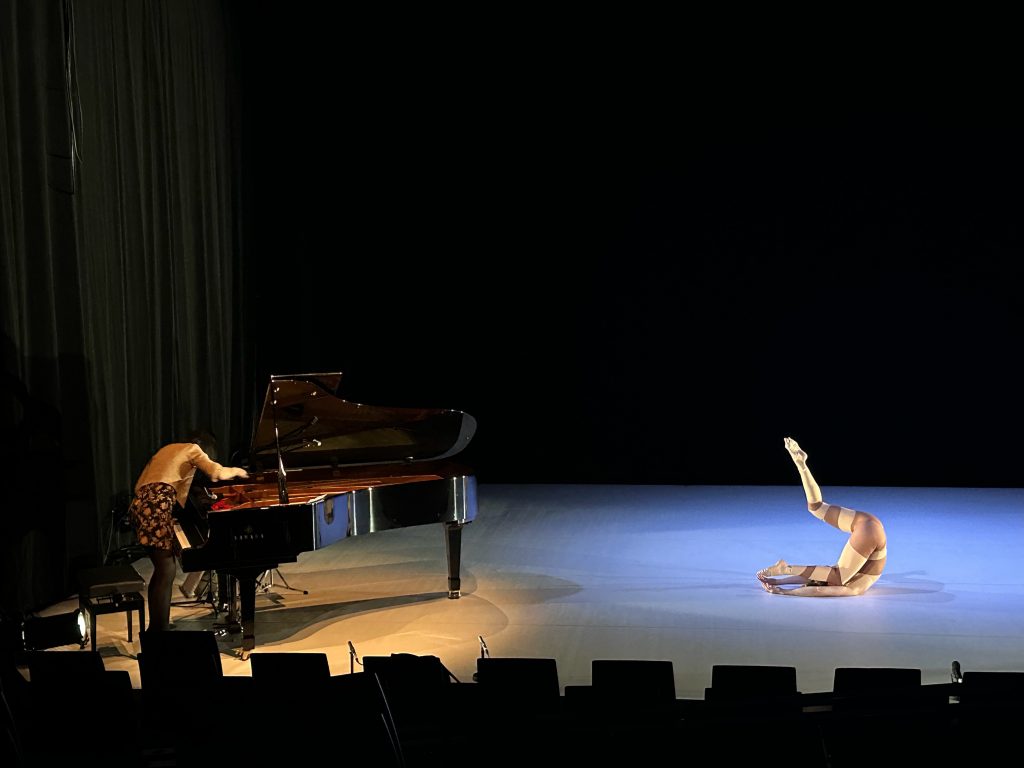
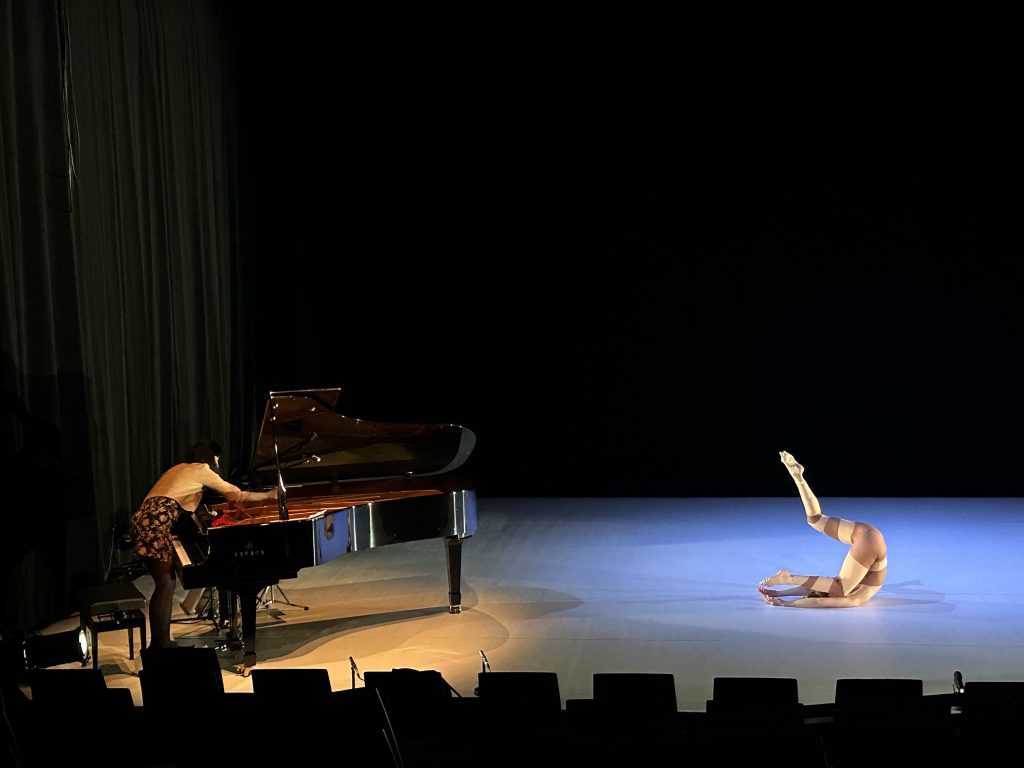
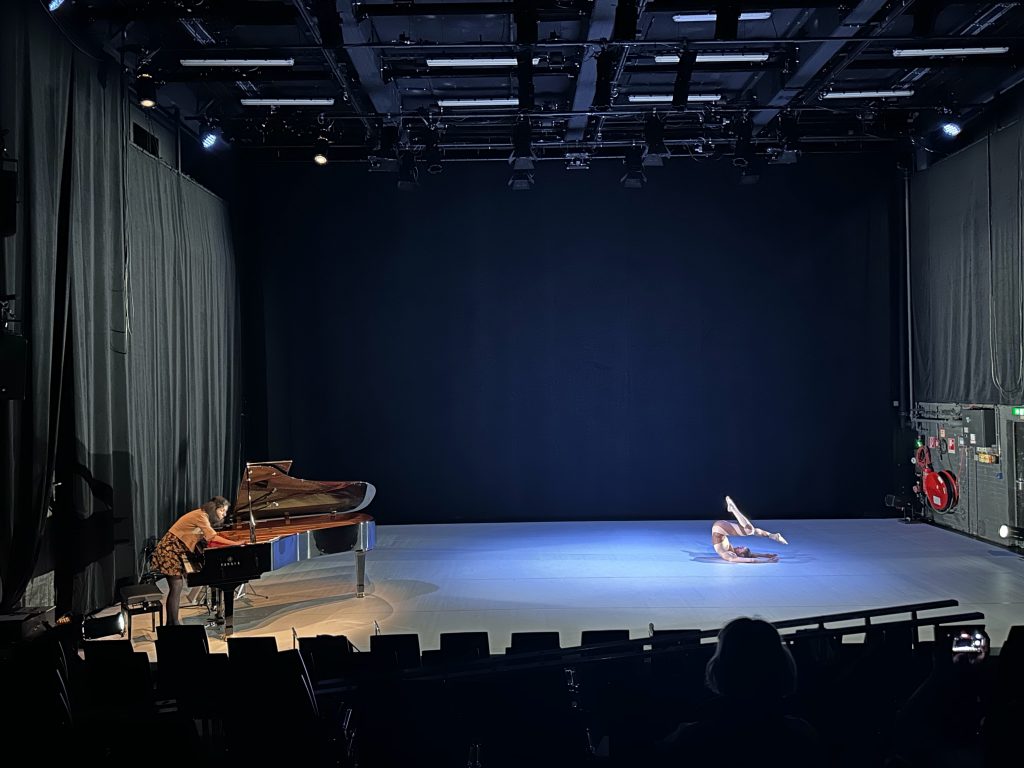
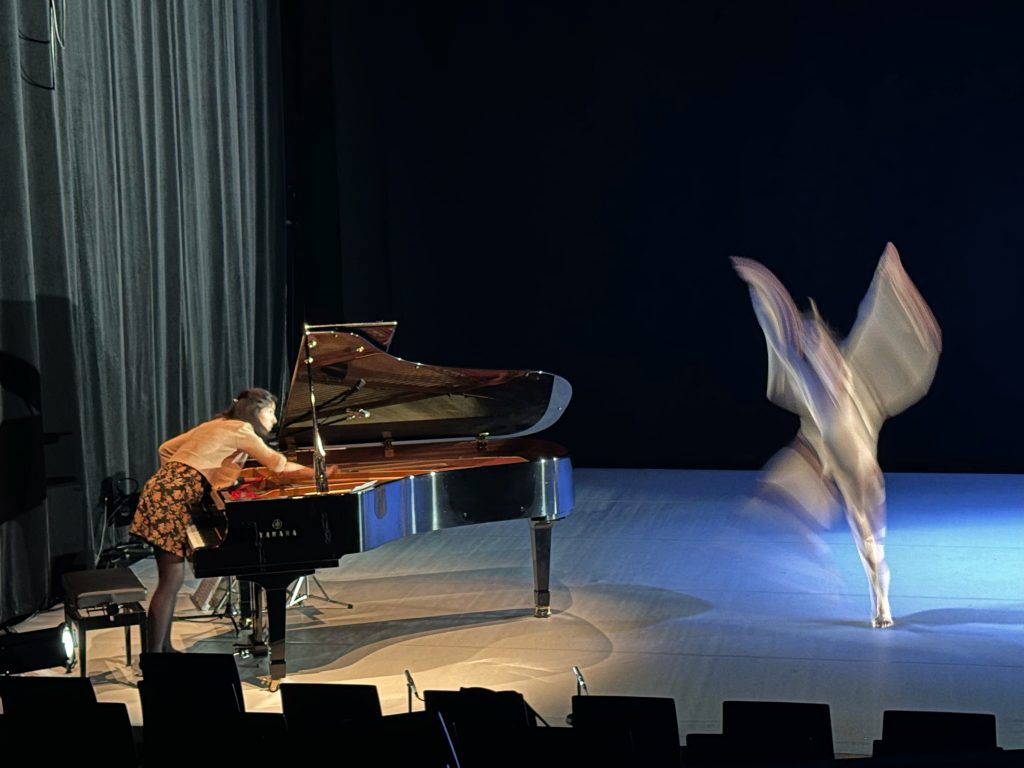
Dlugoszewski in Berlin – MaerzMusik24 part 3 – Agnese Toniutti – Pianist
25 Giugno 2024 @ 10:15
[…] Previous parts: Dlugoszewski in Berlin – MaerzMusik24 part I, Behind (or before) the scenesDlugoszewski in Berlin – MaerzMusik24 part 2, Performance: music and dance […]